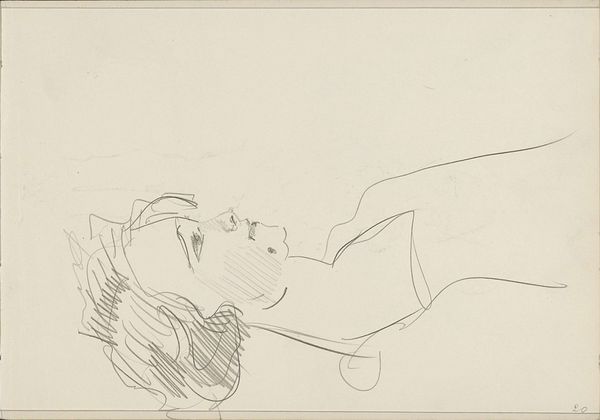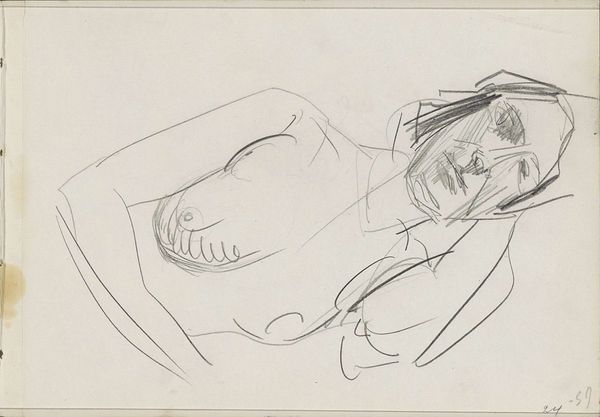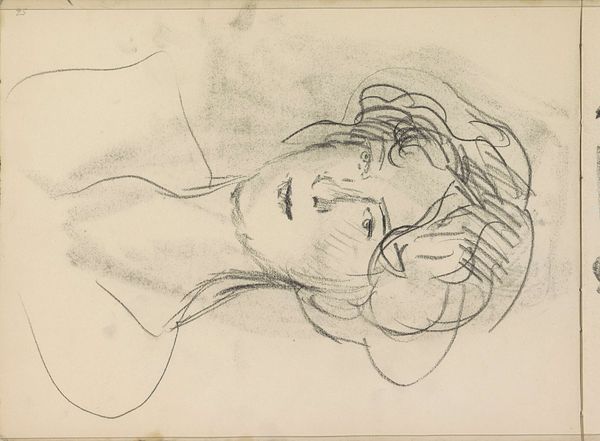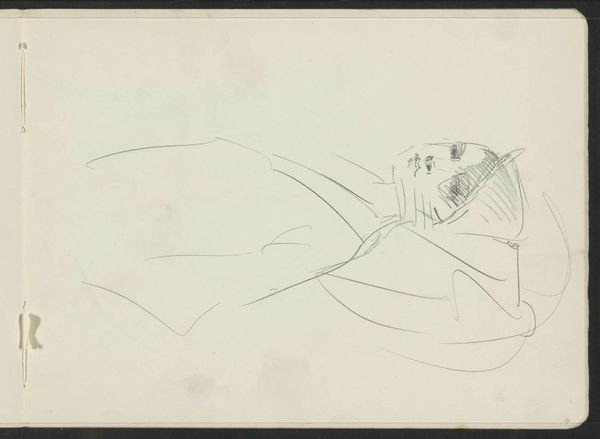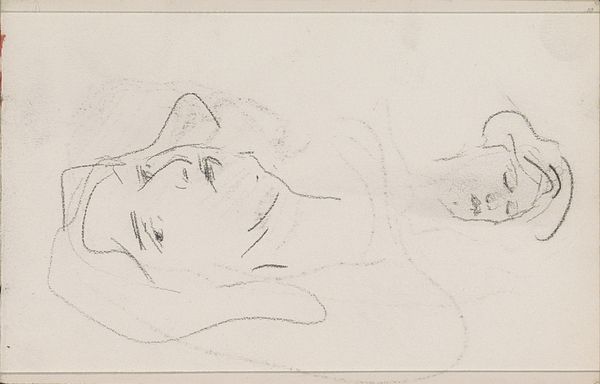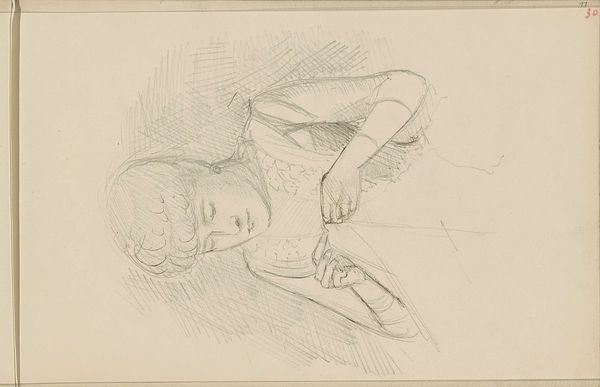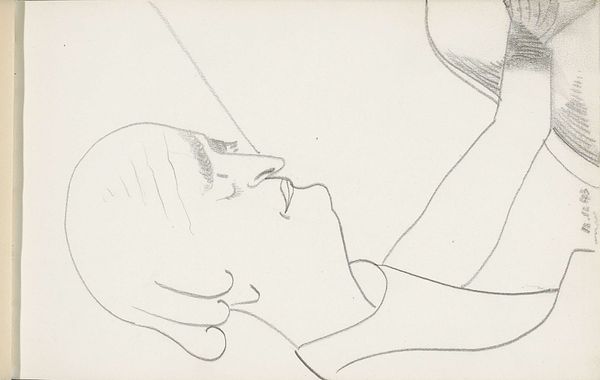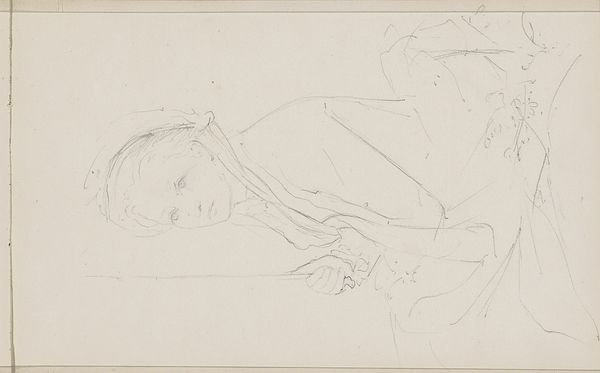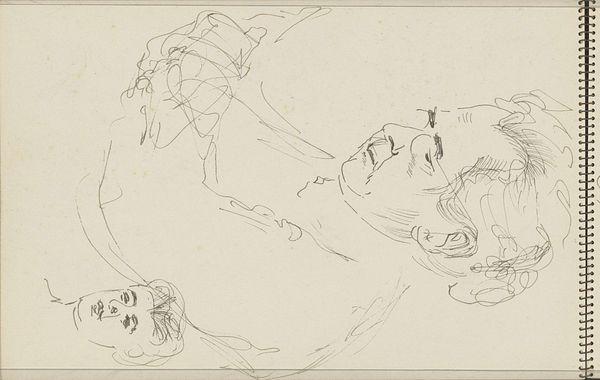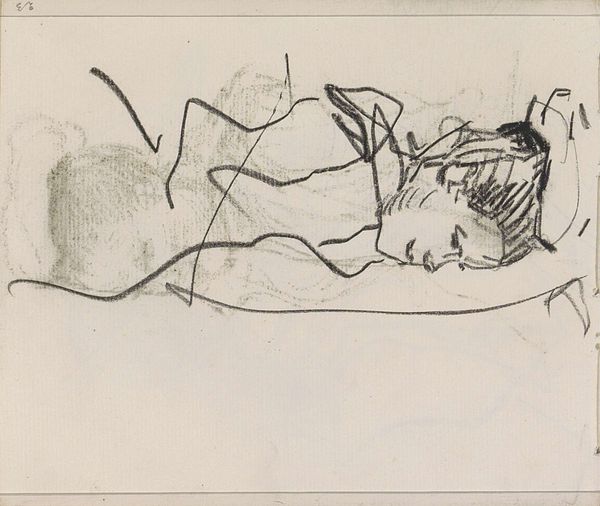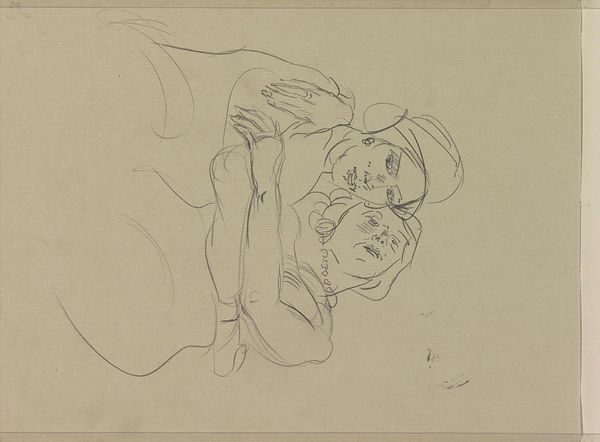
drawing, pencil
#
portrait
#
drawing
#
pencil sketch
#
figuration
#
pencil
#
portrait drawing
Copyright: Rijks Museum: Open Domain
Editor: This is Isaac Israels' "Two Women's Heads," made between 1887 and 1934, rendered in pencil. There’s something quite intimate and unfinished about the work; I feel drawn to the seeming simplicity, though I'm certain it's deceptive. What do you make of this work, approaching it from your expertise? Curator: Considering Israels’ social circle and preferred subject matter, this drawing speaks volumes about labor, materiality, and consumption in his milieu. The visible, almost frantic, pencil strokes aren’t just aesthetic; they highlight the process of image-making, pulling back the curtain on artistic production itself. What might this emphasis on the *doing* of art suggest about the social context from which it emerged? Editor: That’s a compelling point! I hadn’t considered the labor of creation being so overtly presented. It makes me think about the commodification of art—was Israels perhaps critiquing this through his raw presentation? Curator: Precisely. Think about the relationship between the artist, his materials, and the sitter – likely working-class women. The ephemeral nature of a sketch using humble materials subtly challenges the hierarchy between 'high art' destined for bourgeois parlors and the everyday realities of those outside that world. The rapidly executed strokes remind me that it can capture a fleeting moment or a transient experience rather than eternalizing wealth or status. How does acknowledging the social framework in which it was created inform your understanding? Editor: It deepens it considerably! Viewing it as a commentary on labor and social class enriches the experience, far beyond just appreciating it as a study of form. It emphasizes the power dynamics inherent in the art-making process itself. Curator: Exactly. And recognizing those dynamics lets us consider what stories often remain untold in more ‘finished’ artworks. Editor: Thank you for the illuminating conversation. Now, I perceive a deeper significance in what I initially overlooked. Curator: My pleasure. Hopefully, it offered an insightful perspective on the creation of art!
Comments
No comments
Be the first to comment and join the conversation on the ultimate creative platform.
